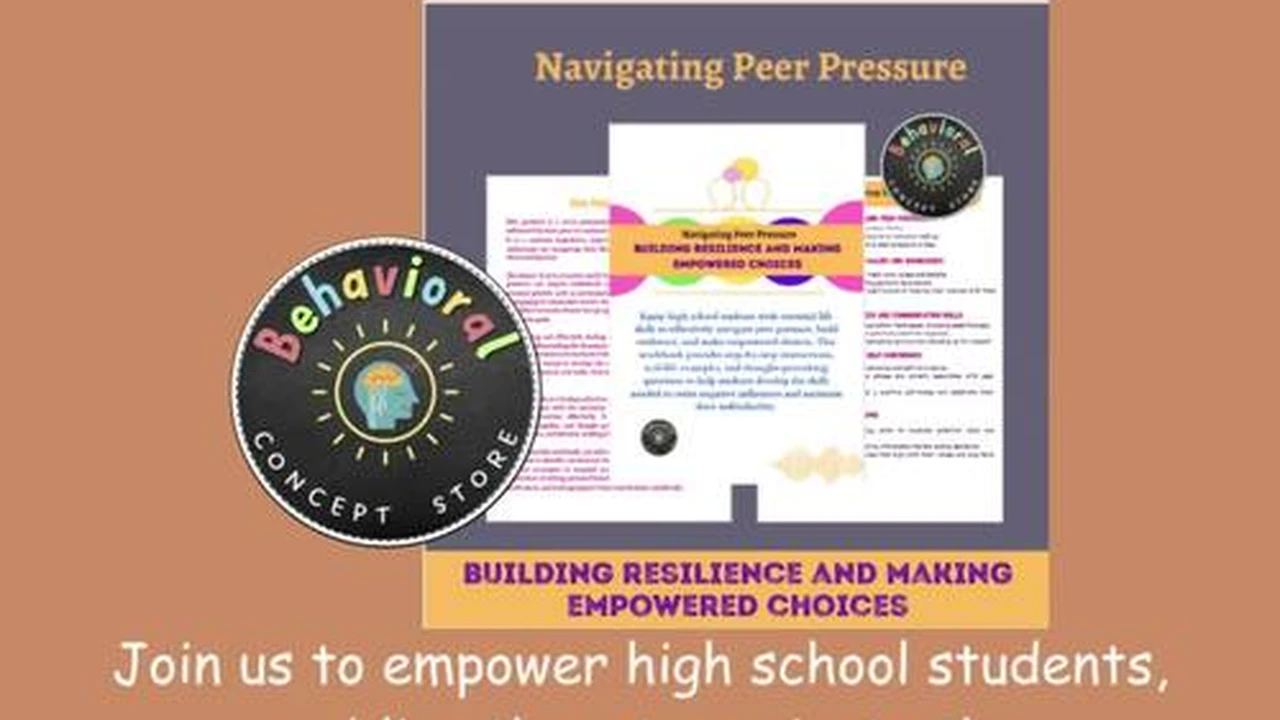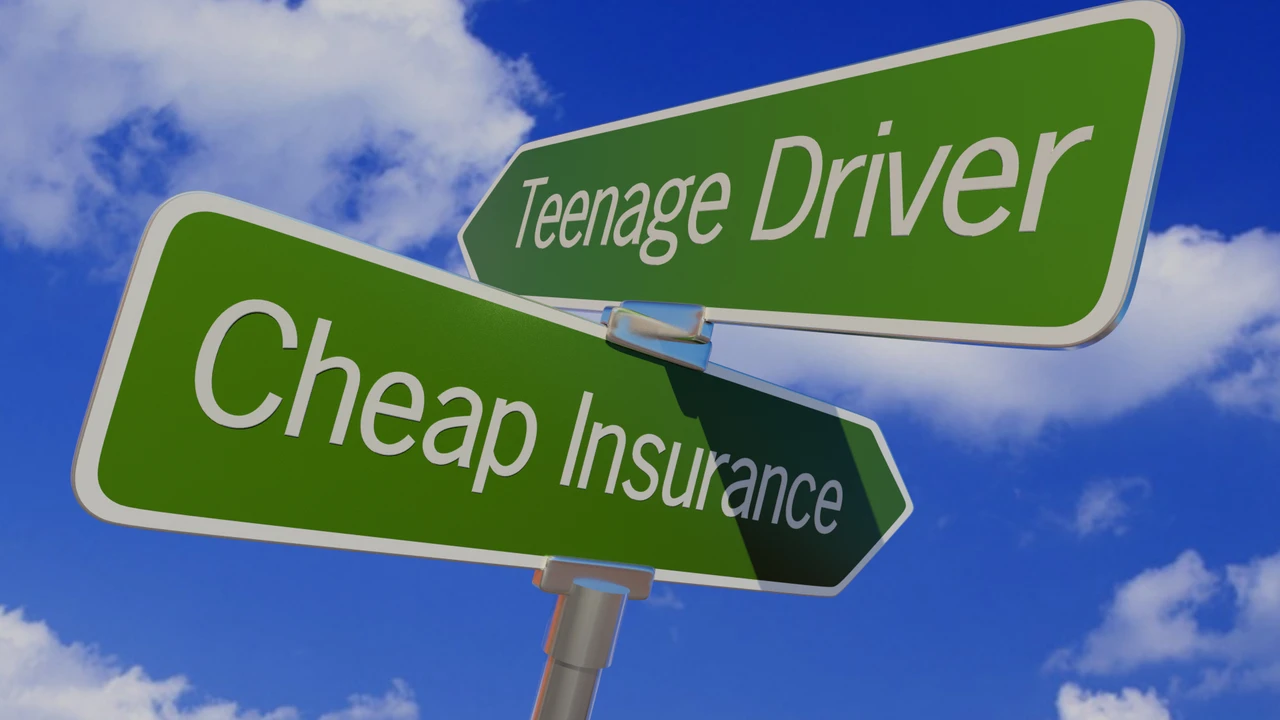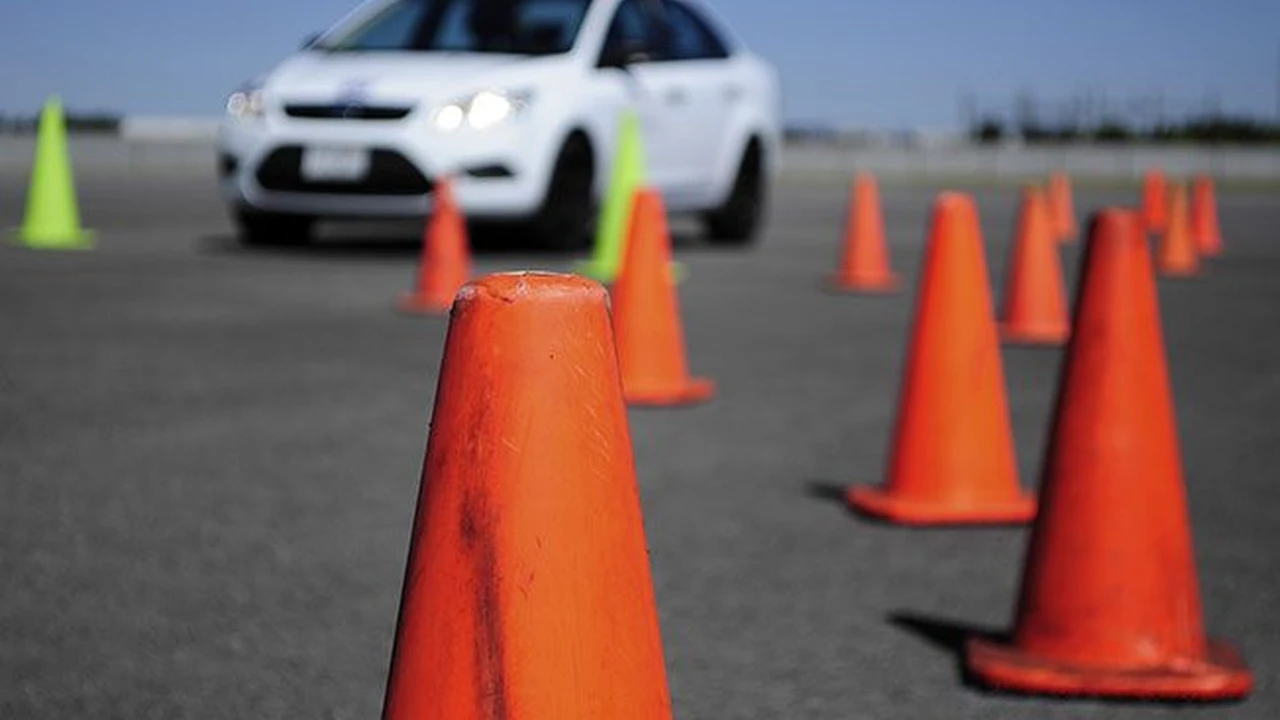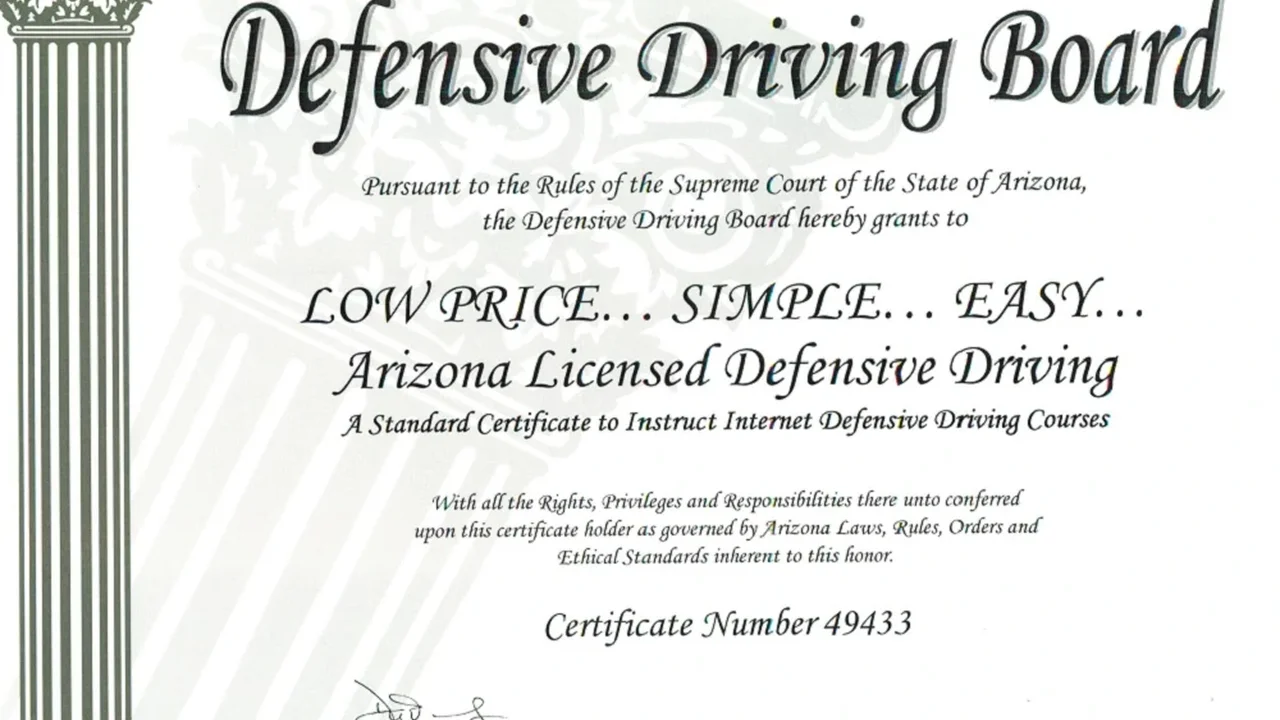Navigating Peer Pressure: Making Safe Choices

Understanding Peer Pressure and Teen Driving Risks
Okay, let's be real. Being a teenager is tough. On top of school, hormones, and trying to figure out who you are, you've got peer pressure breathing down your neck. And when that peer pressure involves driving, things can get seriously dangerous. We're not just talking about annoying situations; we're talking about life-altering consequences. So, let's break down what peer pressure looks like when it comes to teen driving and why it's such a big deal.
Peer pressure, in its simplest form, is the influence exerted by a group or individual on someone to conform to their behaviors, attitudes, or values. For teen drivers, this can manifest in a bunch of ways. Maybe it's friends egging you on to speed, showing off with risky maneuvers, or using their phones while driving. It could even be something as subtle as not wanting to be the "uncool" one who insists on everyone wearing seatbelts.
Why is this so risky? Well, teen drivers are already at a higher risk of accidents due to inexperience. Add peer pressure to the mix, and you've got a recipe for disaster. Studies have shown that teens are more likely to engage in risky driving behaviors when they have passengers, especially other teens. They're trying to impress their friends, fit in, or avoid being judged. But that split-second decision to show off can have devastating consequences.
Think about it: speeding to keep up with friends, texting while driving because everyone else is, or driving under the influence because you don't want to be the odd one out. These are all real-life scenarios that teens face every day. And the pressure to conform can be overwhelming. That's why it's so important to understand what peer pressure is, how it affects your decision-making, and how to develop strategies to resist it.
Recognizing the Signs of Peer Pressure in Driving Situations
Alright, now that we know what peer pressure is, let's talk about how to spot it in driving situations. It's not always obvious, but there are definitely red flags you can watch out for. Being able to recognize these signs is the first step in making safe choices.
One of the most common signs is feeling uncomfortable or anxious about saying "no." If you feel like you have to go along with something, even if you know it's wrong, that's a huge red flag. Maybe your friends are pressuring you to drive faster, skip a stop sign, or take a shortcut that you're not comfortable with. If you hesitate to voice your concerns, that's a sign that you're feeling the pressure.
Another sign is when your friends start making fun of you or calling you names for being cautious. If they label you as "lame," "scared," or "boring" for wanting to follow the rules, they're trying to manipulate you. Don't let their words get to you. Remember, your safety and the safety of your passengers are far more important than their opinions.
Pay attention to the overall vibe in the car. Is everyone hyped up and encouraging risky behavior? Are they blasting loud music and egging each other on? If the atmosphere feels chaotic or unsafe, that's a sign that peer pressure is at play. Trust your gut. If something doesn't feel right, it probably isn't.
Here are some specific examples to watch out for:
- Friends urging you to speed or race another car.
- Pressuring you to text or use your phone while driving.
- Encouraging you to drive after you've been drinking or using drugs.
- Making fun of you for wearing your seatbelt or asking others to wear theirs.
- Pressuring you to drive when you're tired or distracted.
Remember, you have the right to say "no" to anything that makes you feel uncomfortable or unsafe. Don't be afraid to stand up for yourself and your values. Your friends should respect your decisions, even if they don't agree with them. And if they don't, they might not be the best people to be driving with in the first place.
Developing Strategies to Resist Peer Pressure While Driving for Teen Safety
Okay, you've identified the signs of peer pressure. Now, how do you actually resist it? It's not always easy, but with the right strategies, you can stay safe and make smart choices behind the wheel. It all comes down to preparation, confidence, and a little bit of planning.
1. Plan Ahead: Before you even get in the car, have a plan in place. If you're going out with friends, discuss who's driving, where you're going, and what the rules are. Make sure everyone is on the same page about safe driving practices. If you know you'll be in a situation where there might be pressure to drink or use drugs, designate a sober driver or arrange for a ride home.
2. Practice Saying "No": It sounds simple, but practicing saying "no" can make a huge difference. Come up with a few phrases you can use to decline risky behavior. For example, "No, I'm driving, and I need to stay focused," or "I'm not comfortable with that, let's do something else," or simply, "No, thanks." The more you practice, the easier it will be to say it in the moment.
3. Be Assertive: Don't be afraid to stand your ground. If your friends are pressuring you to do something you're not comfortable with, be firm and confident in your refusal. Don't apologize or make excuses. Just state your position clearly and stick to it.
4. Find Allies: Chances are, you're not the only one who feels uncomfortable with risky driving behavior. Look for allies within your friend group who share your values. Stick together and support each other in making safe choices. There's strength in numbers.
5. Have an Exit Strategy: If the situation becomes too uncomfortable or unsafe, have an exit strategy. Know how you're going to get home if you need to leave. Have a code word you can use with a trusted friend or family member to signal that you need help. Don't be afraid to call for a ride, even if it means inconveniencing someone.
6. Focus on the Consequences: Remind yourself of the potential consequences of risky driving behavior. Think about the possibility of getting into an accident, injuring yourself or others, or getting a ticket or arrested. Weigh the risks against the perceived rewards of giving in to peer pressure. Is it really worth it?
7. Remember Your Values: What's important to you? Is it your safety, your family, your future? Remind yourself of your values and let them guide your decisions. Don't let peer pressure compromise what you believe in.
8. Talk to Someone: If you're struggling to resist peer pressure, talk to someone you trust. This could be a parent, teacher, counselor, or older sibling. They can offer support, advice, and help you develop strategies to cope with difficult situations.
The Role of Parents and Guardians in Combating Peer Pressure and Promoting Teen Driver Safety
Parents and guardians play a crucial role in helping teens navigate the challenges of peer pressure and become safe drivers. It's not just about teaching them the rules of the road; it's about fostering open communication, building their confidence, and empowering them to make responsible decisions.
1. Open Communication: The most important thing is to create an environment where your teen feels comfortable talking to you about anything, including peer pressure. Ask them about their friends, their experiences driving, and any situations where they felt pressured to do something they weren't comfortable with. Listen without judgment and offer support and guidance.
2. Set Clear Expectations: Establish clear rules and expectations for your teen driver. These should include things like no texting while driving, no driving under the influence, no speeding, and no driving with too many passengers. Make sure they understand the consequences of violating these rules.
3. Lead by Example: Your teen is watching you. If you engage in risky driving behavior, they're more likely to do the same. Be a good role model by following the rules of the road, avoiding distractions, and driving safely. Show them that you value safety and responsibility.
4. Encourage Assertiveness: Help your teen develop the skills they need to resist peer pressure. Role-play different scenarios and practice saying "no" in a confident and assertive manner. Encourage them to stand up for themselves and their values.
5. Know Their Friends: Get to know your teen's friends and their families. This will give you a better understanding of the influences they're exposed to. If you're concerned about a particular friend, talk to your teen about it. Explain your concerns and help them understand the potential risks.
6. Limit Passenger Restrictions: Many states have graduated driver licensing (GDL) laws that restrict the number of passengers a teen driver can have in the car. Enforce these restrictions and consider adding your own. The fewer distractions a teen driver has, the safer they'll be.
7. Provide Support and Encouragement: Being a teen driver can be stressful. Provide your teen with support and encouragement. Let them know that you believe in them and that you're there for them. Celebrate their successes and help them learn from their mistakes.
8. Consider a Driving Contract: A driving contract is a written agreement between a teen driver and their parents or guardians. It outlines the rules of the road, the consequences of violating those rules, and the responsibilities of both parties. This can be a helpful tool for setting clear expectations and promoting open communication.
Teen Driver Insurance: Understanding Coverage and Cost Factors
Okay, let's talk about the not-so-fun but super important topic of teen driver insurance. Adding a teen driver to your insurance policy can significantly increase your premiums, but it's essential to have adequate coverage to protect yourself and your teen in case of an accident. Let's break down the basics.
Why is teen driver insurance so expensive? Insurance companies consider teen drivers to be high-risk because they're inexperienced and more likely to be involved in accidents. They lack the judgment and skills that come with years of driving experience, and they're often more prone to distractions and risky behavior.
What factors affect the cost of teen driver insurance? Several factors can influence the cost of your insurance premiums, including:
- The Teen's Driving Record: A clean driving record will result in lower premiums. Any accidents or traffic violations will significantly increase the cost.
- The Teen's Grades: Many insurance companies offer discounts to students who maintain good grades. This is because studies have shown that students who are academically successful are also more likely to be responsible drivers.
- The Type of Car: The type of car your teen drives can also affect the cost of insurance. Sports cars and other high-performance vehicles are generally more expensive to insure than family sedans.
- The Coverage Level: The amount of coverage you choose will also impact your premiums. Higher coverage limits will provide more protection but will also cost more.
- The Insurance Company: Different insurance companies offer different rates. It's important to shop around and compare quotes from multiple providers to find the best deal.
- Location: Where you live can also affect the cost of insurance. Urban areas tend to have higher rates than rural areas due to increased traffic and the higher risk of accidents.
What types of coverage do you need? At a minimum, you'll need to meet your state's minimum liability insurance requirements. However, it's generally a good idea to purchase more coverage than the minimum to protect yourself from financial loss in case of a serious accident. Here are some key types of coverage to consider:
- Liability Insurance: This covers damages you cause to other people or property in an accident.
- Collision Insurance: This covers damage to your vehicle in an accident, regardless of who is at fault.
- Comprehensive Insurance: This covers damage to your vehicle from things like theft, vandalism, fire, and natural disasters.
- Uninsured/Underinsured Motorist Coverage: This covers your medical expenses and other damages if you're hit by an uninsured or underinsured driver.
- Medical Payments Coverage: This covers your medical expenses and those of your passengers, regardless of who is at fault.
Product Recommendations for Teen Driver Safety and Monitoring
Alright, let's talk about some products that can help promote teen driver safety and give parents some peace of mind. These aren't a replacement for good driving habits and parental involvement, but they can be valuable tools in the toolbox.
1. GPS Tracking Devices: These devices allow you to track your teen's location in real-time. You can set up geofences to be notified when they enter or leave certain areas, and you can monitor their speed and driving habits. This can be especially useful for new drivers or those who tend to push the limits. Example: LandAirSea 54 GPS Tracker. This tracker is small, discreet, and offers accurate location tracking. It can be hidden easily in the car and provides real-time updates via a mobile app. Use Case: Monitoring your teen's whereabouts and ensuring they're not driving to unauthorized locations or engaging in risky behavior. Comparison: Compared to cheaper trackers, the LandAirSea 54 offers better accuracy and battery life. More expensive options might offer more advanced features, but this tracker provides a good balance of price and performance. Price: Around $30-$50/month depending on the subscription plan.
2. Dash Cams: Dash cams record video footage of what's happening on the road. This can be invaluable in the event of an accident, as it can provide evidence to support your claim. Some dash cams also have features like lane departure warning and forward collision warning. Example: Vantrue N4 3 Channel Dash Cam. This dash cam records the front, interior, and rear of the car, providing comprehensive coverage. It also has night vision and parking mode. Use Case: Providing evidence in the event of an accident and monitoring your teen's driving behavior. Comparison: Compared to single-channel dash cams, the Vantrue N4 offers more comprehensive coverage. More expensive options might have higher resolution or more advanced features, but this dash cam provides a good balance of price and performance. Price: Around $250-$300.
3. Driving Monitoring Apps: There are several apps available that track driving behavior, such as speed, acceleration, braking, and phone usage. These apps can provide valuable insights into your teen's driving habits and help you identify areas where they need to improve. Example: Life360. While technically a family safety app, Life360 includes driving monitoring features that track speed, hard braking, and phone usage while driving. It also provides crash detection and emergency response. Use Case: Monitoring your teen's driving habits and receiving alerts for risky behavior. Comparison: Compared to dedicated driving monitoring apps, Life360 offers a broader range of features, including family location sharing and emergency assistance. Price: Free for basic features, subscription required for driving monitoring and advanced features (around $5-$15/month).
4. Blind Spot Mirrors: These small mirrors attach to your side mirrors and provide a wider field of vision, helping to eliminate blind spots. This can be especially helpful for new drivers who are still developing their spatial awareness. Example: Ampper Blind Spot Mirrors. These mirrors are small, adjustable, and easy to install. They provide a clear view of blind spots and help to prevent accidents. Use Case: Improving visibility and preventing accidents by eliminating blind spots. Comparison: Compared to other blind spot mirrors, the Ampper mirrors are highly rated for their clarity and ease of installation. Price: Around $10-$15 per pair.
5. Breathalyzers: While hopefully never needed, having a portable breathalyzer can be a valuable tool for preventing drunk driving. Encourage your teen to use it if they're ever unsure about their sobriety. Example: BACtrack C6 Keychain Breathalyzer. This breathalyzer is small, portable, and easy to use. It provides accurate BAC readings and connects to your smartphone via Bluetooth. Use Case: Preventing drunk driving by allowing your teen to check their BAC before getting behind the wheel. Comparison: Compared to other keychain breathalyzers, the BACtrack C6 is known for its accuracy and ease of use. Price: Around $80-$100.
Insurance Product Comparison and Recommendations
Navigating the world of teen driver insurance can be overwhelming. Here's a quick comparison of some major insurance providers and their offerings, along with recommendations based on different needs.
1. State Farm: State Farm is known for its strong customer service and wide range of coverage options. They offer discounts for good students, safe drivers, and multi-car policies. Pros: Excellent customer service, comprehensive coverage options, various discounts. Cons: Can be more expensive than some other providers. Recommendation: Good for families who value customer service and comprehensive coverage.
2. GEICO: GEICO is known for its competitive rates and easy online quote process. They also offer discounts for good students, military personnel, and certain professional organizations. Pros: Competitive rates, easy online quote process, various discounts. Cons: Customer service can be inconsistent. Recommendation: Good for budget-conscious families who are comfortable managing their policy online.
3. Progressive: Progressive offers a variety of coverage options and discounts, including their Snapshot program, which tracks your driving habits and rewards safe drivers with lower rates. Pros: Variety of coverage options, Snapshot program, competitive rates. Cons: Customer service can be inconsistent. Recommendation: Good for families who are willing to participate in the Snapshot program to potentially lower their rates.
4. Allstate: Allstate offers a wide range of coverage options and a network of local agents. They also offer discounts for good students, safe drivers, and multi-policy discounts. Pros: Wide range of coverage options, local agent network, various discounts. Cons: Can be more expensive than some other providers. Recommendation: Good for families who prefer to work with a local agent and value personalized service.
5. USAA: USAA is exclusively for military members and their families. They offer competitive rates and excellent customer service. Pros: Competitive rates, excellent customer service, exclusive to military members and their families. Cons: Only available to military members and their families. Recommendation: The best option for military families.
Tips for Lowering Teen Driver Insurance Costs:
- Shop Around: Get quotes from multiple insurance companies to compare rates.
- Take Advantage of Discounts: Ask about discounts for good students, safe drivers, and multi-car policies.
- Increase Your Deductible: A higher deductible will lower your premiums.
- Choose a Safe Car: Avoid sports cars and other high-performance vehicles.
- Enroll in a Driver's Education Course: Some insurance companies offer discounts for completing a driver's education course.
:max_bytes(150000):strip_icc()/277019-baked-pork-chops-with-cream-of-mushroom-soup-DDMFS-beauty-4x3-BG-7505-5762b731cf30447d9cbbbbbf387beafa.jpg)






